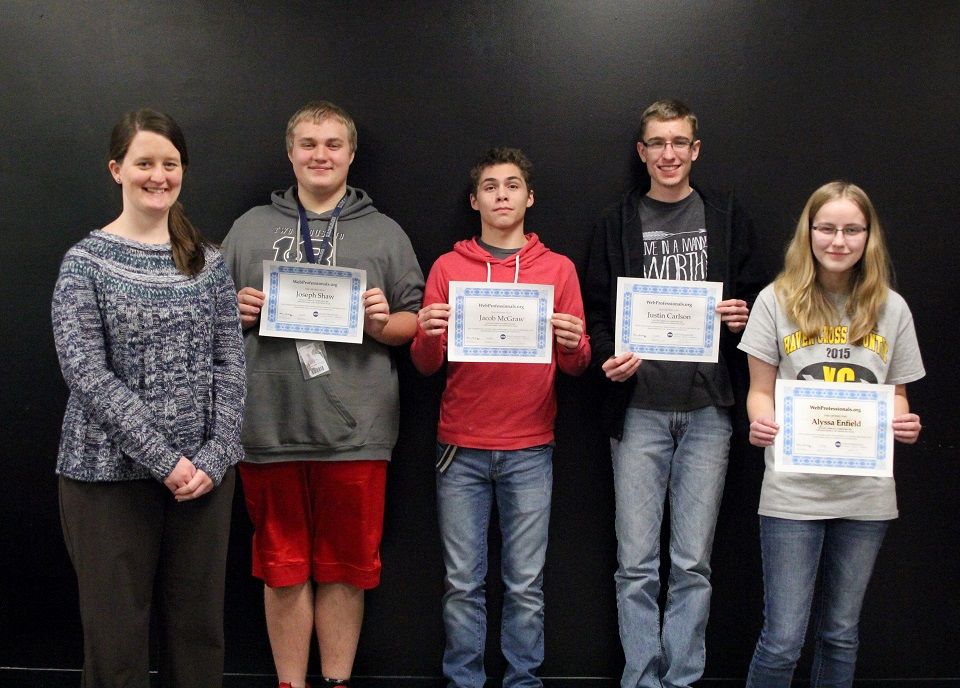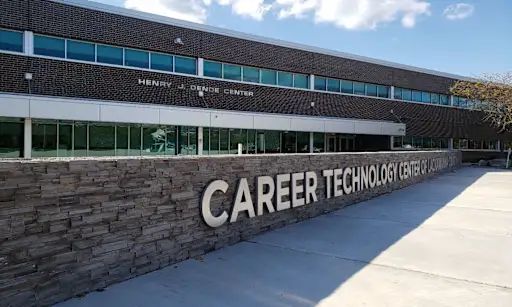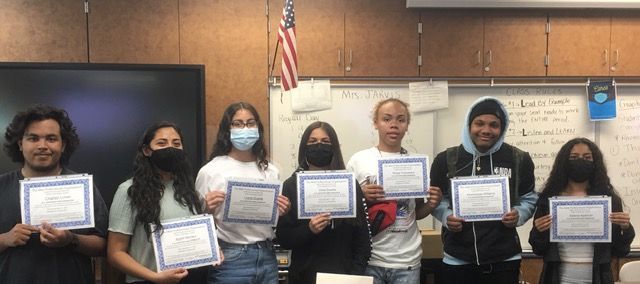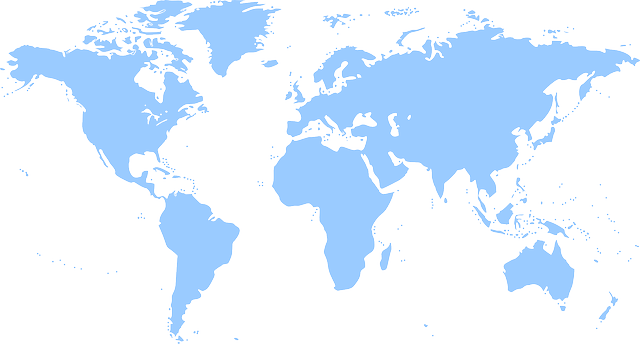Blog
How One California School is Delivering Animation Certificates for Students
We had the chance to catch up for a quick interview with Nikki Jarvis from Lakeview Leadership Academy about the animation certificates she is delivering for her students. Lakeview Leadership Academy serves grades 7-12 and draws students from the richly ethnically diverse population in the ruggedly beautiful high desert of San Bernardino County, CA.
Nikki has been teaching CTeLearning’s Animation curriculum since 2014. She has grown her program from just a few students into a very popular career-oriented graphic design and animation program that truly reflects her personality and passion for teaching.
Nikki is one of the first teachers to deploy the new industry-relevant certificate model that CTeLearning and the Web Professionals Organization have partnered together to create. This model embeds certificates directly into the curriculum, removing test anxiety for students. The model is streamlining how industry certificates are earned in secondary, post-secondary, and workforce education. Nikki was proud to award animation certificates to a number of her students this spring.
Steve Waddell, founder and lead developer of CTeLearning, had the pleasure of catching up with Nikki during her planning period to chat about her recent work and the impact it has had on her students.
How do you explain this opportunity to your students?
Right from the start of the semester, we watch some of the videos in the course featuring professionals who work in animation. They talk about what it is like getting started, and I tell my students that this is their first day in the animation industry. I let them know that they will have the chance to earn the Web Animator international industry-recognized certificate from the Web Professionals Organization. We talk about how this is a post-secondary-level certificate. I explain that as part of this class they will take part in a Virtual Internship or career simulation so they better understand what it means to have a job, clients, and bosses as well as what it is like to create world-class products. If they just want to play, they know this is not the class. I expect them to conduct themselves professionally because they are on a potential career pathway that they may one day pursue even further. And you know what? Most of my students rise to the challenge. We even have professors from California State University, Los Angeles inviting my students to come and visit them. We also have many students who are ESL and FRPM, which is one of the reasons why I have been such a big advocate for equal opportunities for them to earn animation certificates.
How have your students been enjoying the curriculum?
They’re really getting to learn more than just animating—this is a complete career experience. I mean with the Virtual Internship projects, this class runs like a career simulator. We are doing something relevant for the students’ futures. My students learn just how broad the animation career pathway is. I talk to them about career next steps, colleges and future career options, and how they can use their animation certificates as certified web animators to develop that career pathway.
How have parents responded to it?
When I tell parents about the projects, portfolio, industry approach and credentials, they really understand it because they want their kids prepared for the real-world. Parents understand their kids are getting to learn industry-level skills in the classroom.
Can you talk about how important it is not to teach to the test?
I have been teaching this curriculum for several years, and this was the first year that the CTeLearning curriculum has all of the elements and requirements for the industry-based certificate embedded, which means that students earn their animation certificates as they go through the course and create real-world projects. The whole course is a model for mastery education. There is no big exam at the end, as that is not the most effective way of teaching. This rewards my students for all their work—not just passing a test. Every teacher knows that most students struggle with test anxiety—I do too. This year, my students focused solely on the curriculum. This allowed me to completely focus on helping the students master their learning and project work without worrying about another high-stakes test that could rattle them. I was able to tell them that their path to earning the certificate came not from some big scary test at the end of the class, but through their creativity, problem solving, skills, industry knowledge, project work and portfolio. And the certificates are underwritten for my students as well, so there was no testing company fee I would have had to ask my administrators to pay for.
What was it like presenting the students with their animation certificates?
I had each group of animation certificate earners come up to the front of the class and I presented them with a nicely printed certificate in a clear plastic holder. I am also a graphic design teacher, so I had to kick it up a notch. Then we took a class picture they could have to show their parents. The coolest thing was at our senior awards ceremony, when I got the chance to give my seniors their certificates in front of everyone including their friends and family. These are the moments that educators live for. One look in the eyes of my seniors, and I could see all the pride they had. I gave them a moment they will not forget—plus the education, experience, and confidence that comes with my animation classes.
7th Period – From left to right: Charles Lucas, Adalit Montes (MDCP CTE Student of the Year), Lyana Duarte, Velia Duarte, Royal Chambers, Knowledge Williams, Selena Aparicio
The newly minted 2022 Certified Web Animators are: Bahari H., Alejandro L., Angelo M., Naveyra S., Joel H., Breana B., Zoey D., Robert G., Omar M., Jocelyn M., Sophia M., Guy D. R., Zenaida R., Ivy T., Selena A., Royal C., Velia D., Charles L., Capri E. B., Carjon R., Lyana D., Adalit M., and Knowledge W.
What else did your students accomplish?
In addition to the Web Animator certificates, the Ethics in the Workplace micro-credential was embedded in the course. As my students earned the Ethics micro-credential, they became even more motivated to work hard for the “big” Web Animator certificate. This year we had more certificate recipients than ever before. In fact, we had four times as many as any previous year, so this new approach works extremely well.
How have you enjoyed working with CTeLearning?
I love it. Whenever I ask a question, the CTeLearning team is crazy quick to respond. Everyone is great to work with, and they listen to me. I have seen how my suggestions have been taken to heart and they have improved the curriculum to continue to make it better for students as well as teachers.
Who would you like to thank for helping to make this happen for your students?
First, let me say I have a fantastic admin team here. I know teachers in other districts who may struggle with implementing industry-based certificates for their students, but that is not the case here at Lakeview. A huge thanks to Lorraine Collins (district-level Director of CTE and Adult Education), Kellie Williams (district-level CTE Coordinator), Felicia Limbrick (Principal), and Sherri Osterberg (Department Chair), who have all been so supportive to me and the students throughout this process. And thanks again to CTeLearning and the Web Professionals Organization for underwriting the cost of all the student certificates. We appreciate the members of the Web Professionals organization who are so passionate about supporting the next generation of professionals. Thank you for providing us the opportunity to be able to earn these certificates and understanding how important it is to get high schoolers engaged, inspired and credentialed for a fantastic career pathway.
Steve said, “First, the interview was so much fun. Hearing the joy and pride from Nikki about the growth of her program and so much student success made my day. This is the culmination of a big project to take the requirements and domains of an industry certificate and weave them into a project-based learning experience that would not leave any learner behind. We have built a curriculum with our industry team and our partner the Web Professionals Organization to model not only real-world problem and problem solving, but to reward the learners for their skills attainment the same way that industry rewards performance. To me and my team, the success of Nikki’s classes represents years of work to get to this point in reimagining certification. I am incredibly proud and grateful to the Web Professionals Organization for trusting us and working together to make this happen. Being who we are, we are already in 2.0 mode and enhancing the experience based on all the feedback from all our pilot schools who deployed this. The number of students receiving international industry-recognized certificates and industry-based micro-credentials has gone up, on average 600%. We’ll know more when we get the final tallies in late June. But, at this point, there is no going back. We have proved the model and we have gotten the thumbs up from Mark DuBois, the Executive Director for the Web Professionals Organization. Ms. Jarvis is an awesome teacher, and I appreciate her and the Lakeview Leadership Academy administration as well as the students for letting us be a part of their work.”
Get Your Students Engaged With CTE Curriculum and Certificates
If you are a teacher, administrator or parent who is interested in getting your students engaged in exciting animation certificates and other CTE certificates, contact us today. Call or email our founder and lead developer, Steve Waddell, directly at 913-764-4272 or swaddell@ctelearning.com.
Share To
Get in touch with us today!
You can book a demo directly using Calendly, call us directly at 913-764-4272 or 877-828-1216, or submit the form and we will reach out to you.
We look forward to helping you and your students.

Most Recent Posts





